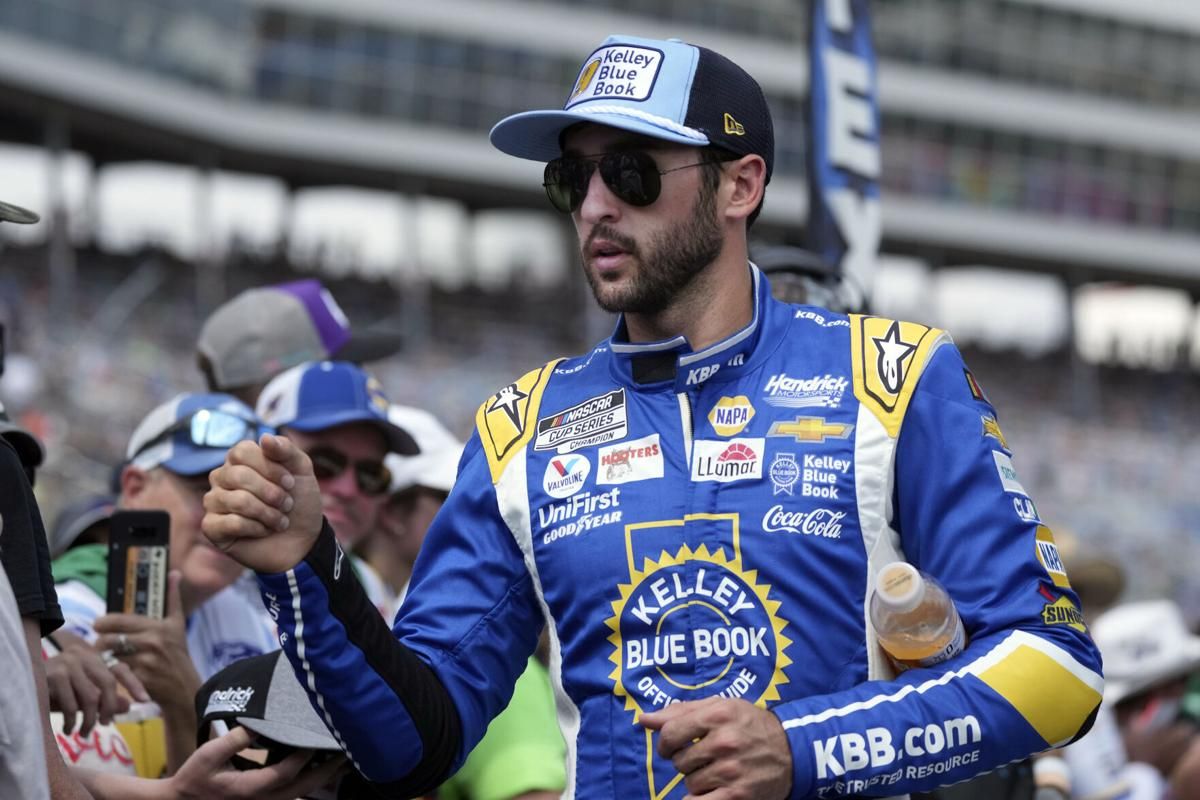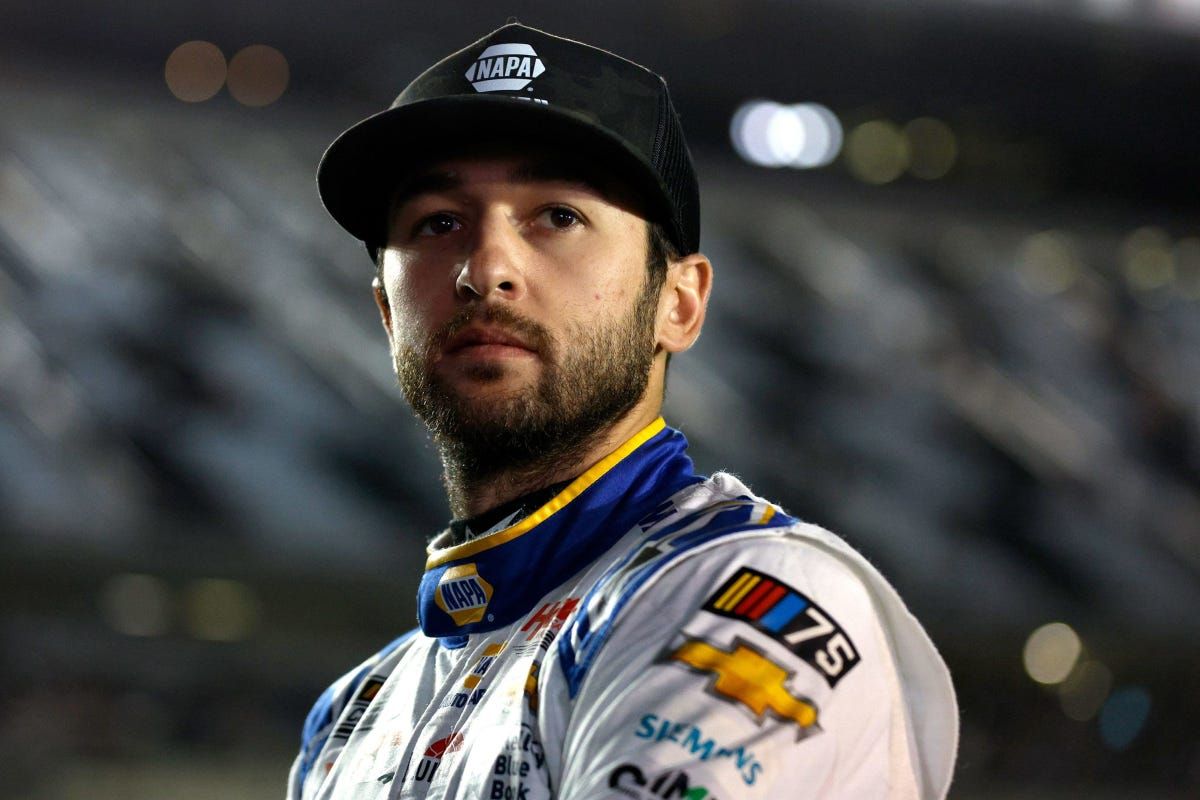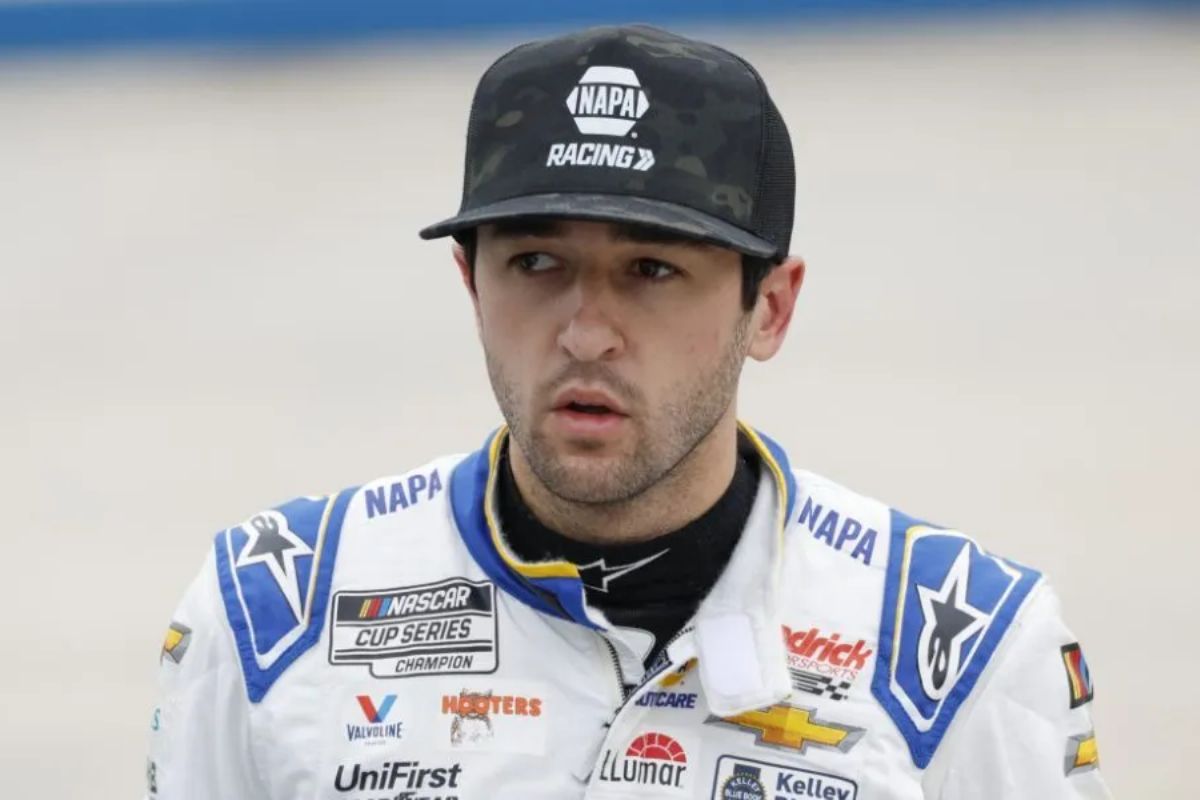Chase Elliott Hints Crew Chief Exit: In the high-octane world of NASCAR, the potential departure of Alan Gustafson, crew chief for Chase Elliott’s #9 Hendrick Motorsports team, portends a significant shift in team dynamics and strategy. Gustafson, a linchpin in Elliott’s racing successes, including a coveted championship, has fostered a synergy that has propelled the team to numerous victories. As whispers of his exit circulate, the implications for Elliott and Hendrick Motorsports are profound. Adaptation and strategic planning will be vital as they face the challenge of maintaining their competitive prowess amidst these anticipated changes. How the team maneuvers through this transformation could redefine their future success in NASCAR’s constantly changing landscape.
Key Takeaways
- Chase Elliott raised concerns about potential key crew member departures, including the crew chief.
- Alan Gustafson’s exit could disrupt the strategic prowess and unity of the #9 team.
- The loss of a crucial figure like Gustafson challenges Hendrick Motorsports’ operational stability.
- Adaptability and strategic planning are vital for HMS amid potential major team changes.
- Elliott’s performance and team dynamics could be impacted by shifts in team leadership and composition.
Chase Elliott’s Stellar Win at Texas Motor Speedway
Breaking a 42-race winless streak, Chase Elliott’s victory at Texas Motor Speedway not only revitalized his 2024 Championship hopes but also underscored his resilient return to top form. This triumph in the #9 Chevy was a reflection of Elliott’s exceptional driving skill and strategic acumen, especially in the context of the recent challenges facing his team at Hendrick Motorsports. The win at Texas was more than just a race victory; it represented a significant psychological and tactical uplift for Elliott and his crew.
The race itself was a masterclass in precision and timing. Elliott’s ability to navigate through the pack, making decisive overtakes and managing his tire wear exemplified his racing pedigree. His performance was particularly impressive given the high-speed, aerodynamically challenging nature of Texas Motor Speedway, a track known for its harsh impact on tires and fuel strategy. Elliott’s management of these elements was flawless, enabling him to take control in the critical final laps of the race.
Moreover, this victory highlighted Elliott’s adaptability under pressure. The backdrop of team changes and the potential exit of key personnel could have unbalanced a lesser experienced driver. Instead, Elliott harnessed this as a motivator, channeling any internal team dynamics into a focused drive towards victory.
This win at Texas not only disrupted the narrative of his recent performances but also injected a renewed vigor into his Championship campaign. With several races still ahead, Elliott’s resurgence at Texas Motor Speedway has definitively put him back in contention, signaling to his competitors that he remains a formidable force in the NASCAR series.

Alan Gustafson’s Vital Role in #9 Garage Success
While Chase Elliott’s remarkable victory at Texas Motor Speedway showcased his driving prowess, it is crucial to highlight Alan Gustafson’s strategic expertise that greatly contributed to the success of the #9 team. Gustafson, as the crew chief, has been instrumental in shaping the team’s strategy and execution to perfection. This is particularly evident in their recent performance, where they not only won but also set a new benchmark in pit stop efficiency.
The #9 crew’s record-breaking four-tire pit stop of 8.49 seconds is a proof of Gustafson’s meticulous attention to detail and his ability to exploit the strengths of his team under pressure. Such achievements are not mere instances of luck but are the fruits of relentless practice, strategic foresight, and a creative approach to race management. Gustafson’s role extends beyond the pit stop; his detailed race strategies have consistently placed Elliott in positions to capitalize on his driving skills.
Moreover, Gustafson’s impact on the team transcends the technical aspects. His leadership has cultivated a culture of excellence and resilience within the garage. He has been a pivotal figure in guiding the team through the shift to the Next Gen car, which presented significant challenges. Despite a dip in form, Gustafson’s expertise and adaptability spearheaded a notable improvement that was clearly on display at Texas.
Elliott’s Concerns About Key Crew Members Departure
Chase Elliott’s concern over the potential exit of key crew members highlights his awareness of the essential role they play in maintaining the team’s competitive edge. The unity and efficiency of the #9 garage have been pivotal in the team’s resurgence since 2022, showcasing a remarkable turnaround in performance. Elliott, therefore, perceives the continuity of his team as crucial to sustaining this upward trajectory.
Elliott’s apprehensions are not unfounded, considering the intricate dynamics of a NASCAR team. Each member, from the chief mechanic to data analysts, contributes distinctly to the car’s performance and strategy on race day. Their cohesion translates into milliseconds shaved on the track, which can mean the difference between victory and a middling finish. The potential departure of these key figures could disrupt the finely-tuned synergy that has been cultivated over recent seasons.
Moreover, Elliott’s desire to keep the current squad intact is a reflection of his leadership and vision for the team’s future. He recognizes that while change is a constant in motorsports, the stability provided by a consistent team can foster an environment conducive to ongoing improvement and success. This is especially significant in a sport where the learning curve is steep and the competitive field is relentless.

NASCAR’s Cyclical Nature and Elliott’s Helplessness
Acknowledging the cyclical nature of NASCAR, Elliott expressed his sense of helplessness in the face of the sport’s inevitable fluctuations. As a top-tier driver for Hendrick Motorsports, steering the Chevy Camaro ZL1, Elliott understands that success in NASCAR is not solely dependent on skill and determination but also on adapting to the constant ebb and flow of team dynamics and technological advancements. This cyclical pattern—where manufacturers and teams see variable performance peaks and troughs—requires a high level of adaptability, which cannot always counteract the feeling of helplessness when faced with uncontrollable changes.
Elliott, amidst these cycles, has voiced a critical aspect of motorsport: the interplay between human effort and the sheer unpredictability of racing conditions. Even with a strong team and a competitive car, the nuances of each race season bring forth challenges that are often beyond a driver’s control, underlining a shared sentiment of impermanence and the need for continuous evolution in strategies and team configurations.
To illustrate, the following table shows aspects of NASCAR’s cyclical nature that impact a driver like Elliott:
| Factor | Influence on Performance | Management Strategy |
|---|---|---|
| Technological Shifts | Can make current setups obsolete | Continuous R&D investment |
| Team Dynamics | Affects morale and efficiency | Fostering strong team culture |
| Competitive Landscape | Varies with new entrants and rules | Agility in strategy adaptation |
Thus, while Elliott’s situation encapsulates the broader challenges faced by all in NASCAR, it also highlights the unique blend of resilience and strategic foresight needed to navigate this ever-changing landscape.
Uncertainty Looms Over #9 Hendrick Motorsports Garage
Amidst the cyclical fluctuations in NASCAR, uncertainty now shrouds the future of the #9 Hendrick Motorsports garage, where Chase Elliott continues to face challenges beyond his control. The looming departure of a key figure in his crew presents not just a personal setback but a strategic conundrum that might redefine his career trajectory. As Elliott grapples with these changes, the broader implications for the team’s dynamics and performance become a focal point of concern.
Chase Elliott, a driver whose record speaks of resilience and capability, finds himself at a juncture where adaptability is not just an asset, but a necessity. The cyclical nature of NASCAR, marked by frequent shifts in team compositions and technological advancements, demands a high degree of flexibility and strategic foresight from its participants. Elliott’s acknowledgment of these shifts underscores his maturity and realistic approach towards the sport’s inherent unpredictability.
The potential exit of his crew chief introduces a variable that could disrupt the established harmony and efficiency within the #9 team. Such changes necessitate a recalibration of strategies and possibly, a redefinition of team roles, which could either forge a stronger unit or lead to a period of adjustment fraught with performance dips. Elliott’s outlook, hopeful yet braced for the inevitable flux, reflects a deep understanding of NASCAR’s operational rhythms.
As Hendrick Motorsports navigates through these impending changes, the focus will without a doubt remain on maintaining competitive edge and team morale. How well Elliott and his team manage this evolution could very well set a precedent for handling similar challenges in the high-stakes world of NASCAR racing.

News in Brief: Chase Elliott Hints Crew Chief Exit
The potential departure of Alan Gustafson from Hendrick Motorsports underscores a pivotal moment for the #9 team, necessitating strategic adaptability and foresight.
This shift may challenge the team’s established dynamics and competitive stature within NASCAR. The situation exemplifies the cyclical and often unpredictable nature of motorsport team compositions, highlighting the critical importance of leadership continuity in achieving sustained success.
As the team faces these changes, their response will be instrumental in defining their future trajectory in the racing world.
Our Reader’s Queries
Q: Who is the crew chief for Chase Elliott?
A: I think that the win’s great, all that stuff is fantastic, but I’m truthfully most proud of the journey and the group of people that we have climbed back up together with. We’ve made each other better. They push me to be a better driver and a better person.” Chase Elliott emphasized, attributing much of their success to crew chief Alan Gustafson.
Q: How much money did Chase Elliott make?
A: Previous Contracts:
- 2019 (Age 24): $9,500,000
- 2020 (Age 25): $10,200,000
- 2021 (Age 26): $8,000,000
- 2022 (Age 27): [Contract details not provided]
Q: Who was Jeff Gordon’s last crew chief?
A: Loomis served as Jeff’s crew chief until 2006, followed by a four-year tenure with Steve Letarte. In 2011, Alan Gustafson took over, remaining Jeff’s crew chief until his retirement last year.
Also Read: Chase Elliott’s Talladega Race Insights: Winning Secrets Unleashed!
